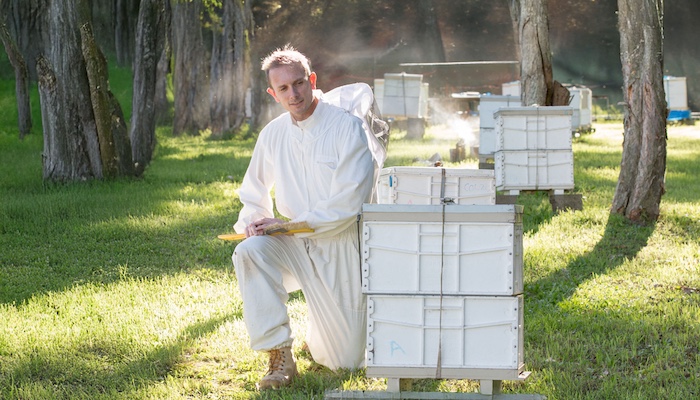- Macquarie University team develop first model of Machado-Joseph Disease (MJD) using zebrafish
- New model allows for testing of drugs to treat the incurable disease
- MJD disproportionately impacts remote Indigenous communities – with approximately 100 Indigenous Australians currently living with the condition and a further 650 people at risk
Macquarie University researchers have developed the first zebrafish model of the neurodegenerative Machado-Joseph Disease – and have used this model to test drugs that could potentially be used to treat the disease, which disproportionately affects Indigenous Australians.
Machado-Joseph Disease, or spinocerebellar ataxia-3, is a hereditary disease caused by a gene mutation, which leads to a progressive loss of muscle control and movement. Most people living with MJD are wheelchair bound and need constant support within 15 years of symptoms first emerging.
Researchers gave the zebrafish the human disease-causing gene, creating the first transgenic zebrafish model of MJD, allowing them to compare the movement, pathology and lifespan of fish carrying the healthy version of the human gene to those with the disease-causing version.
“Zebrafish are small and transparent, allowing us to see how a disease develops. Being able to use zebrafish to model MJD is a great win for those of us working to develop treatments for this debilitating disease,” said lead author Dr Angela Laird, a Biomedical Sciences Research Fellow at Macquarie University.
“Children of people living with MJD have a 50% chance of having the condition, and may experience more severe symptoms, at a younger age. It goes without saying that we need to do more to support people living with the condition.”
As zebrafish absorb medicines added to the water they swim in, the team went on to test the effect of treating the zebrafish with a substance called calpeptin– and found that it removed most of the disease-causing protein.
“These results were even more promising than we had anticipated. The calpeptin didn’t just remove fragments of the disease-causing protein, but the whole protein itself,” added Dr Laird.
“We found that the calpeptin treatment triggered autophagy – a process by which toxic proteins in the body are removed. Once the disease-causing protein was removed, we saw improvements in the movement of the zebrafish with MJD.
“Drugs that trigger the autophagy process could be a promising way to treat not only Machado-Joseph Disease, but also other diseases. Thanks to this model, we can continue to test calpeptin and other related drugs relatively quickly, ultimately contributing to the future development of an effective treatment for the disease.”
The study is part of the PhD thesis of Dr Laird’s PhD student Maxinne Watchon from Sydney University, and has been published in a leading journal, the Journal of Neurosciences. The work was initiated by the MJD Foundation (www.mjd.org.au), which supports Indigenous communities impacted by Machado-Joseph Disease in Arnhem Land and beyond, with the support of the Anindilyakwa Land Council (Groote Eylandt).



